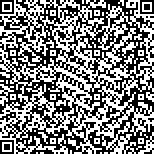刘斯尧、李明芬、刘烨、张丽清、吴毅、唐朝正、贾杰.在线多模态脑电数据可视化系统在脑卒中患者运动想象训练中的应用研究[J].中华物理医学与康复杂志,2016,38(5):370-374
扫码阅读全文

|
| 在线多模态脑电数据可视化系统在脑卒中患者运动想象训练中的应用研究 |
|
| |
| DOI: |
| 中文关键词: 脑电 可视化 脑卒中 运动想象 |
| 英文关键词: Electroencephalogram Visualization Stroke Motor Imagery |
| 基金项目:台州市椒江区科技局课题(122092);“十二五”国家科技支撑计划课题(2013BAI10B03);十堰市太和医院康复养生专项(2014KY06) |
|
| 摘要点击次数: 4472 |
| 全文下载次数: 5372 |
| 中文摘要: |
| 目的 观察本研究开发的新型在线多模态脑电数据可视化系统对脑卒中患者运动想象的影响。 方法 采用随机数字表法将20例脑卒中患者分为实验组与对照组。2组患者均给予基于脑-机接口(BCI)的运动想象训练,实验组同时通过在线多模态脑电数据可视化系统进行监测、指导,以实时调整其运动想象模式。比较2组患者治疗前、后在运动想象时的准确率(CA)及脑电事件相关去同步(ERD)特征情况。 结果 治疗前实验组执行运动想象任务时的准确率[(50.92±2.08)%]与对照组准确率[(49.35±4.20)%]间差异无统计学意义(P>0.05),治疗后实验组执行运动想象任务时的准确率[(64.52±5.27)%]及对照组准确率[(51.18±5.02)%]均较治疗前显著增高(P<0.05),且组间差异具有统计学意义(P<0.05);治疗后2组患者在想象患侧手运动时,其双侧脑区α波段脑电均表现出明显ERD特征,并且以实验组ERD特征更显著,但与对照组间差异无统计学意义(P>0.05);治疗前、后2组患者β波段脑电ERD特征均无显著变化(P>0.05)。 结论 在线多模态脑电数据可视化系统可提高脑卒中患者运动想象效率,增强其大脑自我调节功能,该疗法值得临床进一步研究、推广。 |
| 英文摘要: |
| Objective To explore the effect of a multimodal electroencephalogram (EEG) data visualization system on the motor imagery ability of stroke survivors. Methods Twenty stroke patients were randomly divided into an experimental group and a control group, each of 10. Both groups were provided with brain-computer interface-based motor imagery (MI) training. At the same time, the experimental group was monitored and guided using an online, multimodal EEG data visualization system developed in our department. The classification accuracy (CA) and event-related desynchronization (ERD) of the 2 groups′ motor imagery were compared before and after the treatment. Results Before the treatment, no significant differences in the average CA of MI were found between the experiment group (50.92±2.08) and the control group (49.35±4.20)(P>0.05). After the treatment, however, the experimental group′s average CA had increased to (64.52±5.27), significantly higher than that of the control group (51.18±5.02). When the stroke patients imaged affected upper extremity movements, obvious ERD was observed in the α frequency around the bilateral central motor regions of both groups, especially in the experimental group, but without significant differences between the two groups. However, no significant changes were found in the ERD of the β waves of the two groups(P>0.05). Conclusion The proposed online multimodal electroencephalogram data visualization system can help stroke patients imagine movements actively. It is worth spreading in clinical practice. |
|
查看全文
查看/发表评论 下载PDF阅读器 |
| 关闭 |